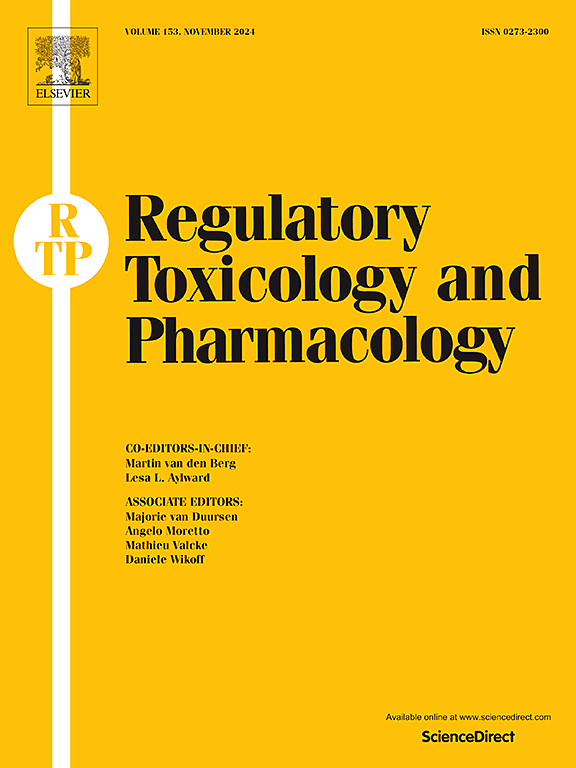Opportunities and challenges for use of minipigs in nonclinical pharmaceutical development: Results of a follow-up IQ DruSafe survey
IF 3
4区 医学
Q1 MEDICINE, LEGAL
引用次数: 0
Abstract
Minipigs are valid nonrodent species infrequently utilized for pharmaceutical research and development (R&D) compared with dogs or nonhuman primates (NHPs). A 2022 IQ DruSafe survey revealed a modest increase in minipig use by pharmaceutical companies compared with a prior 2014 survey, primarily in the development of oral small molecules and parenteral protein molecules. Some companies considered using minipigs more often due to NHP shortages and regional ethical concerns with using NHPs and dogs. However, for most pharmaceutical companies, minipigs still represent ≤5% of their nonrodent animal use. Key challenges noted by companies to wider adoption of minipigs were high test article requirement, limited historical control data, and lack of relevant reagents or assays. Additionally, some companies expressed uncertainties about contract research organization (CRO) capabilities and experience, a perception not shared by respondent CROs. These latest survey results indicate persistence of many concerns previously identified in 2014. Several case studies are included to illustrate areas of expanded minipig use as well as the challenges that hinder broader adoption. Ongoing, focused, and industry-wide initiatives to address the identified or perceived challenges may lead to more frequent or routine consideration of minipigs as a test species in pharmaceutical R&D.
在非临床药物开发中使用迷你猪的机遇与挑战:IQ DruSafe 调查的后续结果。
与狗或非人灵长类动物 (NHP) 相比,迷你猪是有效的非啮齿类动物物种,很少被用于药物研发 (R&D)。2022 年 IQ DruSafe 调查显示,与 2014 年的上一次调查相比,制药公司使用迷你猪的情况略有增加,主要用于开发口服小分子药物和肠外蛋白分子药物。一些公司考虑更频繁地使用迷你猪,原因是NHP短缺以及使用NHP和狗的地区伦理问题。然而,对于大多数制药公司而言,迷你猪仍占其非啮齿动物使用量的 ≤5%。公司指出,更广泛采用迷你猪所面临的主要挑战是试验品要求高、历史对照数据有限以及缺乏相关试剂或检测方法。此外,一些公司对合同研究组织 (CRO) 的能力和经验表示不确定,而受访的 CRO 并不认同这种看法。最新调查结果显示,2014 年发现的许多问题依然存在。调查还包括几个案例研究,以说明微型机器人的扩大应用领域以及阻碍更广泛应用的挑战。为解决已发现或感知到的挑战而采取的持续、集中和全行业范围的举措,可能会促使在制药研发中更频繁或更常规地考虑将迷你猪作为试验物种。
本文章由计算机程序翻译,如有差异,请以英文原文为准。
求助全文
约1分钟内获得全文
求助全文
来源期刊
CiteScore
6.70
自引率
8.80%
发文量
147
审稿时长
58 days
期刊介绍:
Regulatory Toxicology and Pharmacology publishes peer reviewed articles that involve the generation, evaluation, and interpretation of experimental animal and human data that are of direct importance and relevance for regulatory authorities with respect to toxicological and pharmacological regulations in society. All peer-reviewed articles that are published should be devoted to improve the protection of human health and environment. Reviews and discussions are welcomed that address legal and/or regulatory decisions with respect to risk assessment and management of toxicological and pharmacological compounds on a scientific basis. It addresses an international readership of scientists, risk assessors and managers, and other professionals active in the field of human and environmental health.
Types of peer-reviewed articles published:
-Original research articles of relevance for regulatory aspects covering aspects including, but not limited to:
1.Factors influencing human sensitivity
2.Exposure science related to risk assessment
3.Alternative toxicological test methods
4.Frameworks for evaluation and integration of data in regulatory evaluations
5.Harmonization across regulatory agencies
6.Read-across methods and evaluations
-Contemporary Reviews on policy related Research issues
-Letters to the Editor
-Guest Editorials (by Invitation)

 求助内容:
求助内容: 应助结果提醒方式:
应助结果提醒方式:


